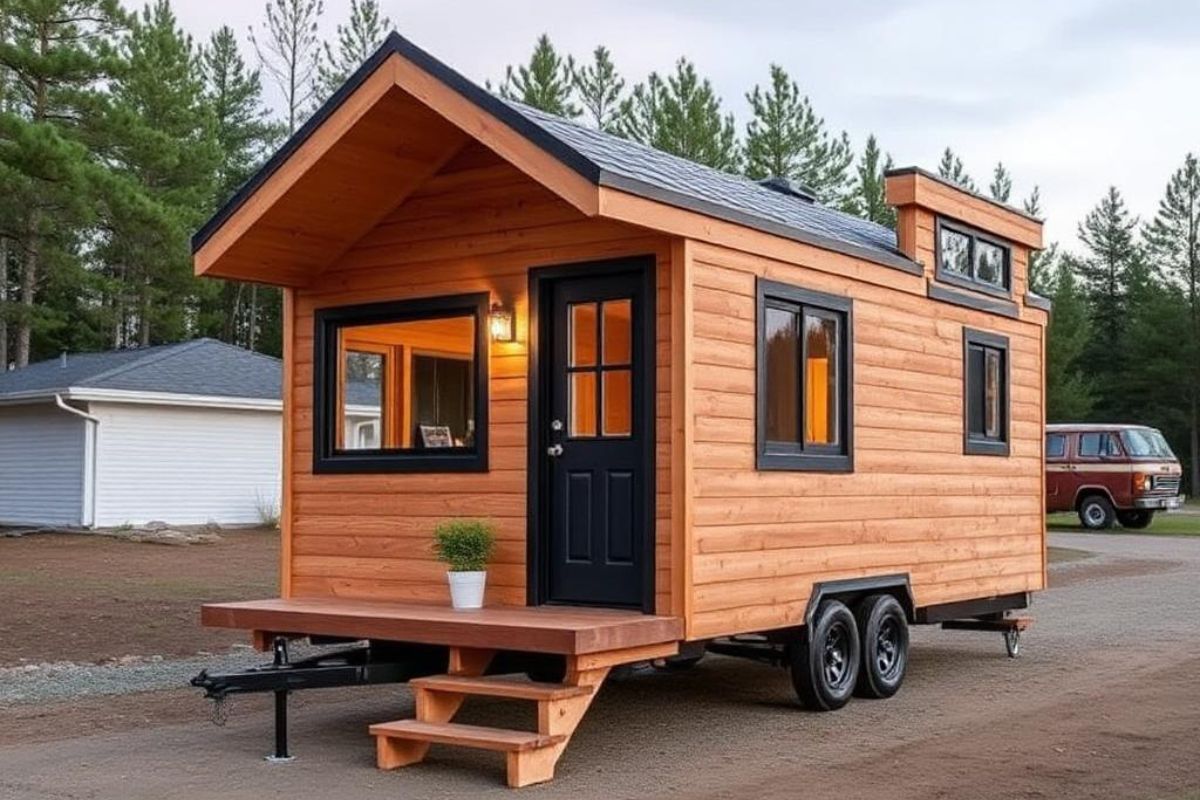Maintaining the roof of a tiny house is essential to prolonging its lifespan and safeguarding it from Mother Nature's challenges. These compact homes require as much attention to detail as any larger dwelling, especially when it comes to protecting them from the weather. Regular inspections and maintenance can significantly reduce the risk of leaks, mold growth, and structural damage.
Taking proactive measures is vital in minimizing potential issues. Clearing debris, checking for missing shingles, and cleaning gutters will ensure water flows correctly and does not pool on the roof. These straightforward tasks are crucial in preventing small problems from escalating into larger, more costly concerns.
Analyzing Roof Materials and Design
Choosing appropriate materials and understanding design principles are crucial for maintaining a tiny house roof's integrity. These factors directly impact durability, cost-effectiveness, and protection against weather.
Choosing the Right Materials for Tiny House Roofs
Selecting materials involves balancing durability, weight, and cost.
Metal roofs are popular due to their longevity and low maintenance. They offer superior protection from rain and hail.
- Pros: Durable, fire-resistant.
- Cons: Higher initial cost.
Asphalt shingles are another option. They're affordable and come in many styles.
- Pros: Cost-effective, easy to replace.
- Cons: Less durable, may need frequent repairs.
Consider eco-friendly options like recycled rubber or solar tiles. These materials can improve insulation and reduce energy costs.
- Pros: Environmentally friendly.
- Cons: Higher price.

Understanding Roof Slopes and Drainage
Roof slope plays a key role in efficient water drainage. A steeper slope promotes rapid water runoff, reducing likelihood of leaks. A 4/12 pitch is effective for most weather conditions.
Flat roofs require special attention to drainage. They benefit from built-in drainage solutions like gutter systems or internal drains, minimizing water pooling.
For areas with heavy snowfall, steeper slopes help prevent snow accumulation. Ensure that all drainage components remain clear of debris to maintain effectiveness. Installing ice and water shields is beneficial for preventing leaks during freeze-thaw cycles.
Effective roof design minimizes maintenance needs and prolongs the lifespan of the roof.

Seasonal Maintenance and Protection Strategies
Taking care of a tiny house roof involves preparing for weather, cleaning regularly, and checking for damage. Each season presents unique challenges that require specific maintenance strategies to ensure the longevity of the roof.
Preparing for Harsh Weather Conditions
He should monitor weather forecasts for storms or severe weather. In preparation, reinforcing weak spots using waterproofing sealants helps. Proper insulation protects against temperature extremes, reducing the risk of ice dams or warping.
Storm shutters or tarps can add extra protection. Before storm seasons, checking the condition of gutters and downspouts ensures water is diverted away effectively, preventing water damage. During winter, a snow rake can be used to remove heavy accumulations, reducing the risk of structural damage.
Regular Cleaning and Debris Removal
Regular cleaning is vital for a tiny house roof. Removing leaves and twigs prevents moisture build-up, which can cause rot or mold. They should use a soft-bristle brush for cleaning, avoiding harsh scrubbing that could damage the surface.
Cleaning the gutters at least twice a year is essential, especially after autumn when leaves are abundant. A clutter-free roof ensures effective drainage, helping to prevent leaks and structural issues. Roof maintenance like moss and algae treatment, using environmentally friendly solutions, can prevent further growth.
Inspecting for Damage and Leaks
He needs to inspect the roof every season for any signs of damage or leaks. Key areas to check include flashing, shingles, and vents. Small cracks or missing shingles should be repaired promptly to prevent worsening conditions.
During inspections, paying attention to the underside of the roof is crucial. Water stains or streaks inside the home can indicate leaks. Using binoculars aids in checking hard-to-reach areas without climbing. Regular inspections can identify minor issues before they evolve into major problems, ensuring the roof remains in good condition throughout the year.
Professional Inspection and Repair
Professional help can extend your tiny house roof’s life and prevent minor issues from escalating. Recognizing the best times to seek expert advice and knowing the techniques they employ keeps your home well-protected.
When to Consult Roofing Companies
For tiny home owners, knowing when to consult a roofing professional is crucial. Severe weather events should prompt immediate inspection for damage. Indianapolis, known for its volatile weather, often sees residents turning to local roofing companies for assessments.
Routine checks are advisable twice a year to identify early wear signs like cracks, leaks, or missing shingles. If occupants notice any unusual noise from the roof or water stains indoors, it's time to schedule a visit from a roofing expert.
Longevity and Repair Techniques

Roofing professionals utilize a variety of techniques to ensure longevity. Reinforcing underlayment adds an extra layer of protection against leaks. For tiny houses, experts recommend high-quality shingles suited for compact structures, enhancing durability.
Repairs often involve precise reshaping or replacing sections to maintain coverage. Sealants are applied to seams for additional waterproofing. In Indianapolis, where rain and snow are prevalent, these methods are particularly beneficial. If a full roof replacement is necessary, you can get an instant estimate here.
Sustainable Roofing Solutions and Innovations
Sustainable roofing solutions are essential in tiny house construction. They provide durability and environmental benefits. Among the materials considered are recycled metal roofing and green roofs.
Recycled metal roofing is known for its durability and ability to withstand harsh weather conditions. It's cost-effective in the long run. This type of roofing reduces waste and promotes the use of existing resources.
Green roofs are another innovative option. They help insulate the tiny house and improve air quality. They involve planting vegetation on the roof surface, which can naturally manage rainwater and offer some thermal regulation.
Solar panels can be integrated into roofing, providing energy sustainability. They need routine maintenance to ensure they're functioning optimally. Proper installation ensures maximum efficiency and a longer lifespan.
Understanding the pros and cons of each option is vital. Regular inspections are necessary to catch issues early, minimizing repair costs and extending the roof's life. Sustainable choices not only protect the home but also contribute positively to the environment.






Share: